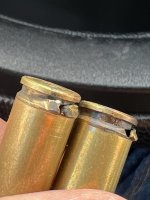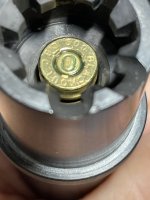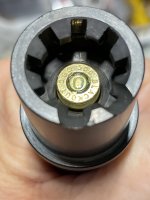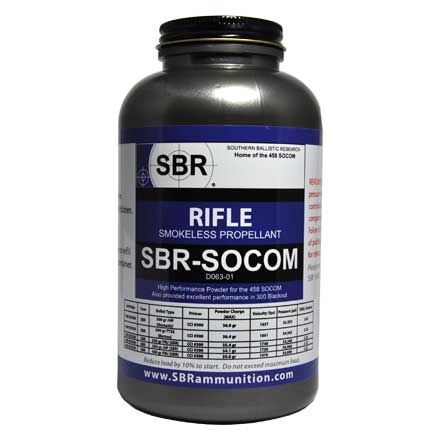In case you were still wondering, I took a barrel extension off a shot out Noveske barrel and put it in a spare upper I have so I can test the OOB firing. Plus side is no barrel blocking the view.
Warning: long winded post coming.
Cliffs: parts in spec can't cause an OOB discharge.
I put the Noveske extension in the new upper and threw on a barrel nut to hold it in place. Grabbed a new Tool craft BCG and got to checking. Here is what it looks like fully forward with me pushing the firing pin. Firing pin easily reaches, lugs are fully locked up. Notice how far back the carrier is in the ejection port.
View attachment 8286449
Here you can see full lug contact and firing pin protrusion.
View attachment 8286450
I removed the BCG and reinserted it with me pushing the firing pin and a brass punch on the bolt face covering the firing pin hole. I did this to ensure the bolt/carrier would stop traveling before the firing pin protrudes.
View attachment 8286451
Now note the bolt lugs in the next pictures. They are still making full contact and the firing pin IS NOT protruding. So even when the lugs have full contact, the firing pin cannot reach. The carrier still must move forward to fully push the bolt into the carrier. The bolt carrier can move rearward without turning the bolt because of the cam pin path in the carrier.
View attachment 8286452
Next I pulled the carrier out as far as it can go before it touches the extension. In this position, the bolt cannot rotate because the cam pin it hitting the upper. The cam pin will not let the bolt to rotate until the cam pin gets to the cutout in the upper. If the bolt cannot rotate, the firing pin has 0 chance or reaching because the cam pin is going to keep the bolt from going into the carrier. Any further forward and the bolt cannot rotate because the lugs are in the way.
Note how far back the carrier is
View attachment 8286479
View attachment 8286480
This shows how parts that are in spec cannot cause an OOB discharge (in spec also means not broken).
A broken cam pin will certainly cause an OOB discharge. The bolt will go fully into the carrier without ever rotating the bolt.
A long firing pin or broken/short bolt tail will cause more firing pin protrusion but it would have to be extreme for it to reach the primer AND not have a fully rotated and locked up bolt.
A broken firing pin might have a newton cradle effect and be able to set off a primer.
A worn upper can also cause the bolt to rotate and collapse into the carrier enough for the firing pin to reach. The wear would have to be extreme for this to happen. You'd see the lugs in their entirety through the ejection port. In the following picture, the hammer will still hit the firing pin. Any further back and I don't think geometry will let that happen.
View attachment 8286571





